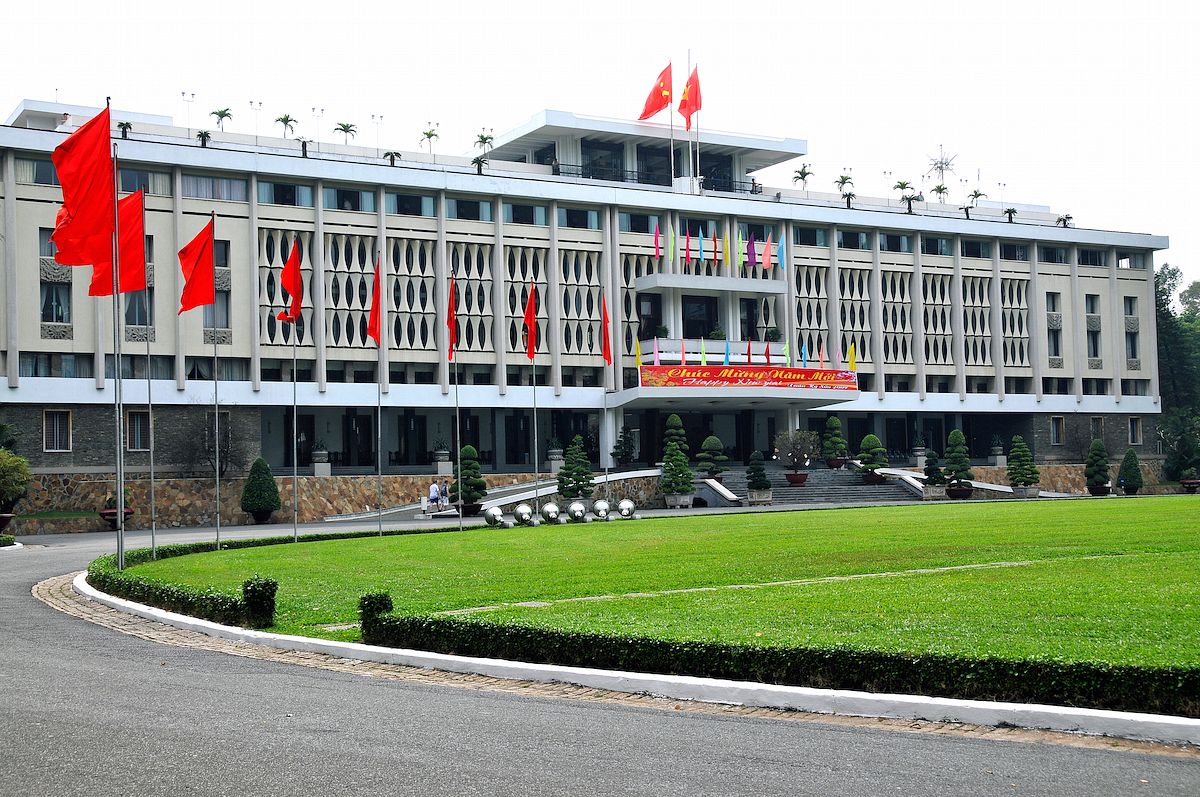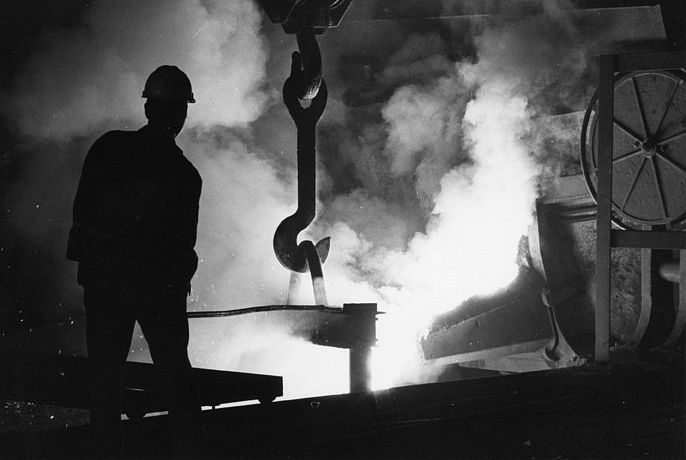Fifty years ago today, South Vietnam’s then-president Nguyen Van Thieu inaugurated the city’s Independence Palace on October 31, 1966.
However, before the land at the western end of Le Duan Boulevard housed this building, it was the site of the French Palace of the Government, also known as Norodom Palace. Constructed between 1868 and 1873, the original palace was built by Frenchman Georges l’Hermitte, the first Beaux Arts-trained architect to work in Indochina. The grand colonial structure came with a price tag of 12.5 million francs.

The original French-built Norodom Palace. Photo via Flickr user manhhai.
Despite the time, money and effort that went into the French-built structure, the palace’s practical use was short-lived. Though it briefly served as a residence for the Governor of Cochinchina, governmental reshuffling in 1887 moved the governorship up north to Hanoi, relegating the head of Saigon’s French colonial government to the rank of lieutenant governor. The palace was vacated and became a ceremonial venue, while Saigon’s lieutenant governor moved to Gia Long Palace, now the Ho Chi Minh City Museum.

Gia Long Palace, now the HCMC Museum. Photo via Journal Around Saigon.
The French High Commissioner later returned to the building after World War II, but its most famous 20th-century resident was South Vietnamese President Ngo Dinh Diem, who moved in and dubbed the structure the Independence Palace in 1955. Diem would later order the demolition of the French-built structure after an attempted coup on February 27, 1962 destroyed the entire left wing of the palace. Norodom Palace was demolished in May 1962; construction of the new building began that July and finished in 1966.
This is where architect Ngo Viet Thu comes in. Thu, the first Vietnamese recipient of the Grand Prix de Rome, which he won in 1955, and the first Asian architect to become an Honorary Fellow of the American Institute of Architects, in 1962, was the brains behind the modern-day rendition of the palace. In an attempt to fuse both modern architecture and its traditional Asian variety, Thu incorporated auspicious Chinese characters into the building’s layout and design.

The Chinese characters which inspired the current palace's architecture. Image courtesy of Tim Doling.
As a result, the palace’s shape reflects different characters when viewed from different angles. From above, for instance, the Independence Palace mimics the form of the Chinese character jí (吉), which represents good luck. Facing forward, there are another five or so Chinese characters embodied in the building’s façade: xīng (興, prosperity); wáng (王, king) – or, with an extra stroke, zhŭ (主, master) – to symbolize sovereignty; zhōng (中, center) to signify a leader’s responsibilities; sān (三, three), representing the three tenets of humanity, wisdom and boldness; and kǒu (口, mouth), symbolizing high standards of education and freedom of speech.
Of course, Diem never lived to see the completion of the palace. Though construction continued after his assassination in 1963, it was President Nguyen Van Thieu who became the first resident of the Independence Palace. From then until April 21, 1975, the building housed South Vietnam’s leaders.
Though the new structure, too, faced bombing raids, it remained relatively intact. In fact, since the morning of April 30, 1975, when tanks crashed through the gates of the palace and National Liberation Front (NLF) Lieutenant Bui Quang Than climbed to the roof to plant an NLF flag in place of the South Vietnamese emblem, not much has changed within the palace walls.

A photo of the tank which crashed through the Independence Palace gates on April 30, 1975 held up against the present day fence. Photo via Flickr user Khanh Hmoong.
Today, tourists pour through the palace – which was renamed the Reunification Palace in November 1975, though it’s still often known under its former moniker – taking in its 70s-style décor and the scores of historical artifacts kept within the building. Among these is an oil painting in the first-floor Banqueting Room painted by Thu, the palace architect himself, in honor of the building’s inauguration.
Equally fascinating is the palace’s basement. Fearful of the bombing attacks which had already targeted the building, Diem insisted upon constructing an underground tunnel network capable of withstanding bomb blasts. Today, only the upper tunnel network is open to the public, however the system of underground routes enabled palace staff and residents to move through the building undetected. Evidence also suggests that Gia Long Palace, where Diem lived during the construction of the contemporary palace, was linked to Independence Palace by way of an underground system which utilized already-constructed drainage tunnels.

One of the secret tunnel exits from the Independence Palace was located in this house within the Saigon Zoo grounds. Photo via Flickr user manhhai.
Immediately following the end of the American War, Saigon’s Independence Palace was designated a historical and cultural relic. In 2009, the Vietnamese government recognized the structure as a special national monument. Fifty years on, its remains one of the few well-preserved historical structures in the southern hub.
[Photo via Flickr user Dennis Jarvis]














